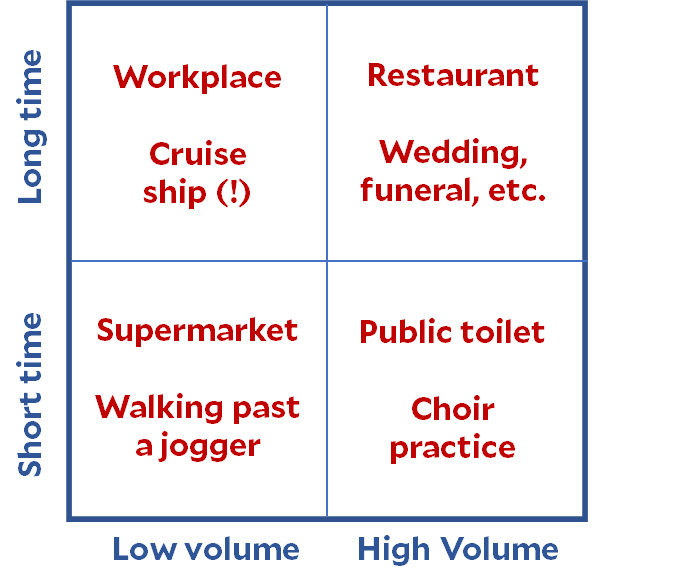What’s dangerous and what isn’t? Erin Bromage, a professor of biology at the University of Massachusetts Dartmouth, has a pretty useful roundup here. The main lesson is: it’s all about Volume x Time. That is, it’s dangerous to be in places with a large volume of viral particles and it’s also dangerous to be in places that might have low volumes but require you to stay a long time. As a former management dweeb, I immediately had to put this into BCG chart form:

Supermarkets, Bromage says, are generally fairly low in viral particles; aren’t very crowded; and usually require only 30-60 minutes of your time. They’re pretty safe. Conversely, a public toilet requires only a few minutes of your time but is shockingly high in viral particles if an infected person has been in it recently.
Indoor workplaces mostly have fairly modest volumes of viral particles, with obvious exceptions like meatpacking plants. However, you’re there eight hours a day. If anyone is infected, there’s a decent chance you will be too. And then there are restaurants, which can have quite high viral loads and often take 2-3 hours of your time.
Anyway, read the whole thing. “The main sources for infection,” Bromage says, “are home, workplace, public transport, social gatherings, and restaurants. This accounts for 90% of all transmission events.” The rest of the piece is pretty helpful too.

















